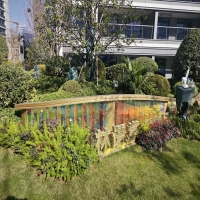Welcome to the website for landscape facilities products and knowledge.
How does the table’s surface handle heat, such as from hot plates or coffee cups?
Modern table surfaces are engineered with remarkable heat-resistant properties that protect against daily thermal challenges. The secret lies in the material composition and protective coatings that create a barrier between intense heat and the table's core structure.
For hot plates straight from the stove, most quality tables can withstand temperatures up to 150-200°F for short periods. However, direct contact with extremely hot cookware exceeding 300°F may cause damage, especially on wooden surfaces. The thermal tolerance varies significantly between materials – engineered wood with melamine coatings generally outperforms solid wood, while quartz and granite surfaces offer superior heat resistance.
Coffee cups present a different thermal profile. The typical ceramic mug heated to 160°F poses minimal risk to most table surfaces. However, the real danger emerges from prolonged exposure rather than brief contact. Many manufacturers incorporate heat-stable polymers or ceramic-based coatings that distribute thermal energy evenly, preventing localized damage.
Advanced table surfaces now feature microscopic air pockets within their sealants that act as insulation barriers. When heat contacts the surface, these pockets absorb and dissipate thermal energy before it reaches the substrate. This technology allows the table to handle sudden temperature changes without cracking or warping.
For optimal protection, using trivets or coasters remains essential, particularly for temperatures above 212°F. Regular maintenance of the protective sealant ensures continued heat resistance. Modern tables combine material science with practical design to create surfaces that balance aesthetic appeal with functional durability against thermal stress.
Related search:

Recommendation
Metal and acrylic color-changing combined curtain wall for large-scale public landscape facilities